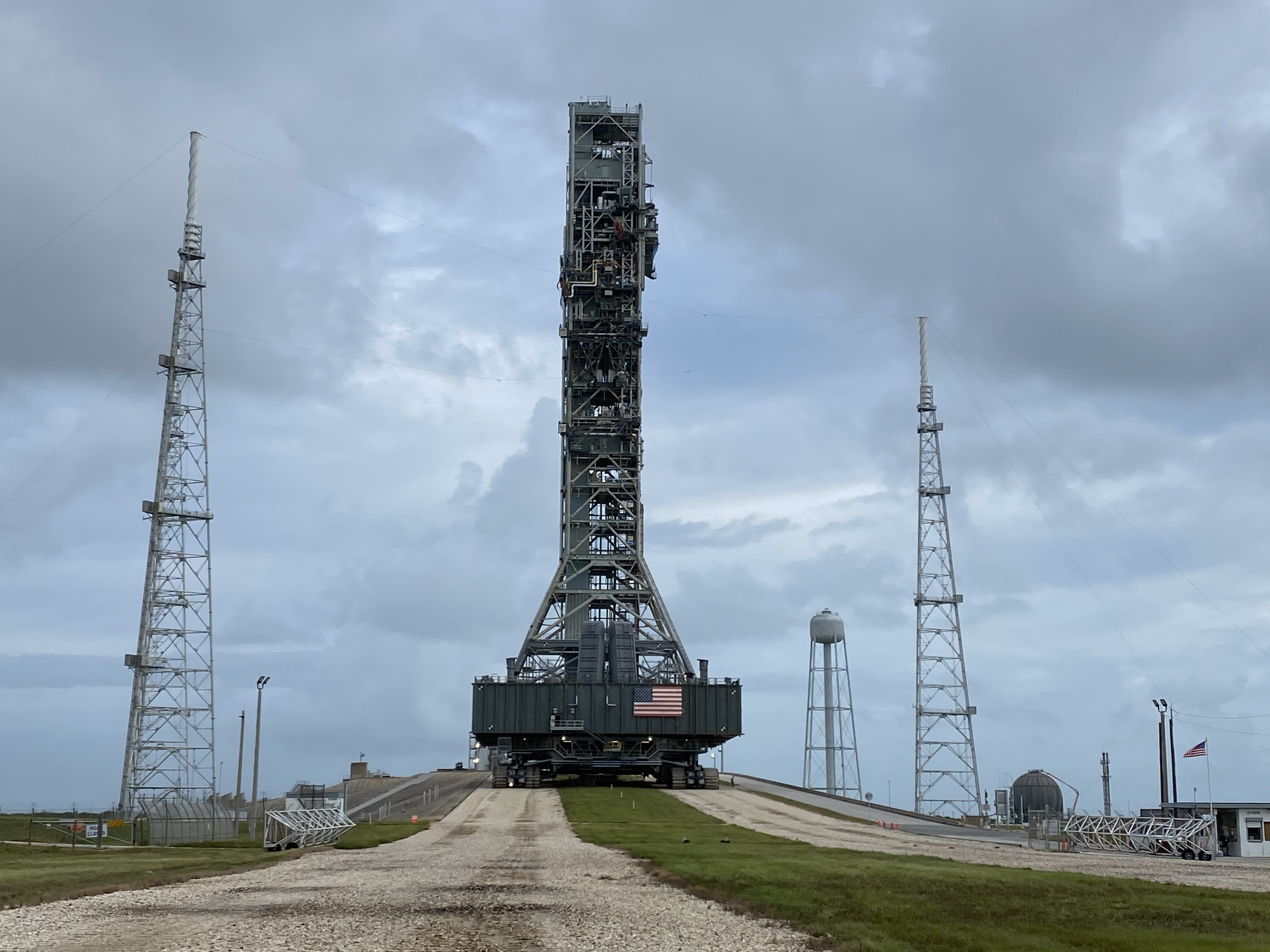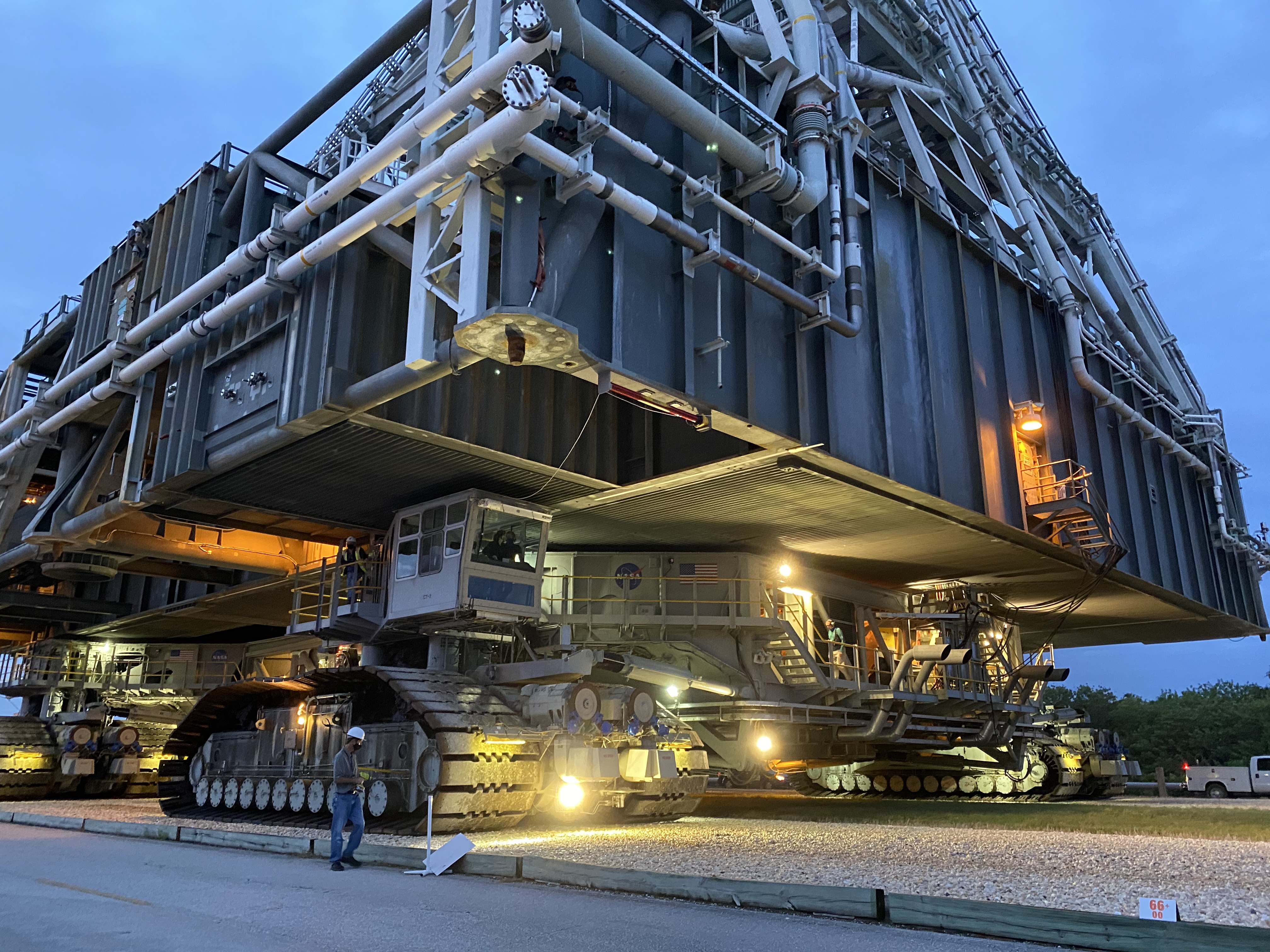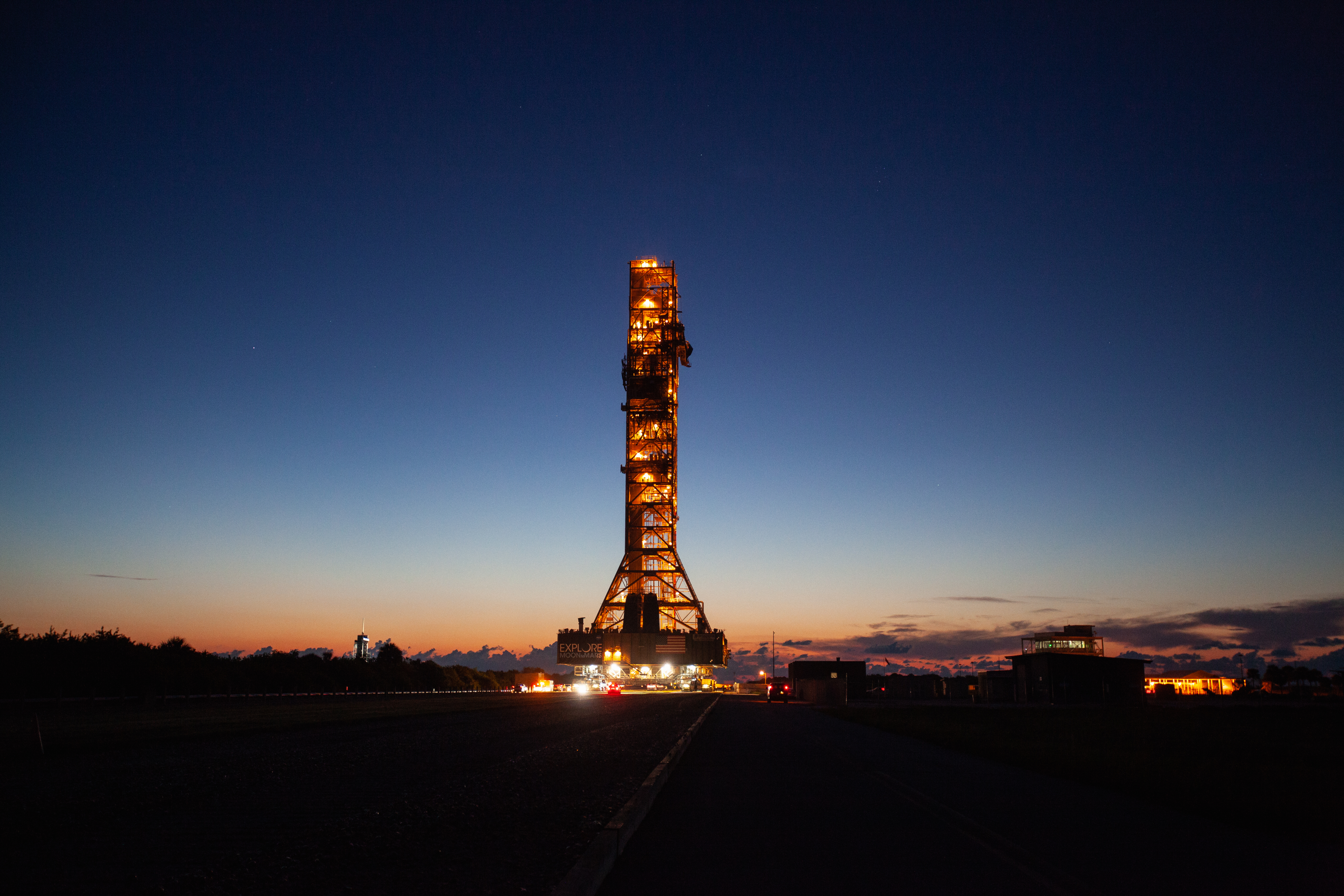NASA's megarocket mobile launcher crawls to the launch pad for moon mission prep

CAPE CANAVERAL, Fla. — NASA's massive Mobile Launch Platform (MLP) was on the move last month.
On Oct. 20, the massive platform rolled out of the Vehicle Assembly Building here at Kennedy Space Center, on top of NASA's crawler transporter. The 380-foot-tall (116 meters) platform will eventually carry the agency's massive Space Launch System (SLS) rocket and Orion spacecraft as part of the upcoming Artemis 1 lunar mission, which is set to blast off sometime late next year.
To prepare the platform for its upcoming mission, the Exploration Ground Systems team rolled it out to the pad at Launch Complex 39B for two weeks of tests.
Related: NASA sees parallels between Apollo and Artemis moonshots
The MLP began its slow 4.2-mile (6.8 kilometers) crawl out to the pad just after midnight on Tuesday, arriving at the top of the launch pad approximately 10 hours later. This trek to the pad is a crucial part of the launch preparation process and will help prepare the team for the upcoming wet dress rehearsal and launch of SLS and Orion on Artemis 1.
It will stay at complex 39B for approximately two weeks, running through a series of pre-launch activities. First, engineers will thoroughly wash down the MLP, top-to-bottom, to remove any debris leftover from the construction the team has performed, including the installation of umbilical arms.
"The wash down will reduce the risk to the SLS/Orion during launch," Cliff Lanham, EGS flow director, told Space.com. "Some of the debris are inaccessible without using high-pressure water, available at the pad, to get into hard-to-reach areas."
Get the Space.com Newsletter
Breaking space news, the latest updates on rocket launches, skywatching events and more!
To that end, the team will utilize the launch pad's fire suppression system, which has hoses on each level. This way they can really get into all the nooks and crannies to ensure that there won't be any debris leftover that could damage the rocket or the spacecraft on launch day. This activity will also allow engineers to recertify the MLP's fire suppression system, which Lanham says has to be renewed yearly. (The last certification was received in December 2019.)
Related: NASA unveils plan for Artemis 'base camp' on the moon beyond 2024

Teams will also validate the launch team's countdown timeline to ensure all launch-related activities are timed correctly. "We're going to run through [launch] countdown demonstrations and prove we can meet the timelines needed to make sure we have a successful, on-time launch," Lanham said.
Lanham said that the mobile launcher was built from scratch, originally intended for NASA's Constellation program (which aimed to return astronauts to the moon by 2020 but was canceled in 2010), and then engineers modified it to be able to support SLS. Its ride, the Crawler Transporter 2, was also souped up to be able to handle and transport NASA's upcoming megarocket.
As part of the Artemis lunar program, NASA plans to land the first woman and the next man on the moon sometime in 2024. But before the agency puts humans on board, it needs to fully test both the rocket and the spacecraft. That's the purpose of the Artemis 1 mission, which will send an uncrewed Orion spacecraft on a trip around the moon in late 2021.

NASA is currently in the process of testing the systems on its first SLS rocket, putting the core stage through its paces. Sometime in November, the agency will conduct a hot fire test of the vehicle's four RS-25 engines, called a green run hot-fire test. This test, which takes place at NASA's Stennis space center in Mississippi, is one of the last major milestones before next year's launch.
The Artemis 1 flight test will demonstrate the performance of various key systems on both vehicles, including the crew capsule's heat shield. Artemis 2 — the first crewed test flight of SLS and Orion — will send humans around the moon and return them safely back to Earth. That mission is currently slated for late 2022.
Follow Amy Thompson on Twitter @astrogingersnap. Follow us on Twitter @Spacedotcom or Facebook.
Join our Space Forums to keep talking space on the latest missions, night sky and more! And if you have a news tip, correction or comment, let us know at: community@space.com.

Amy Thompson is a Florida-based space and science journalist, who joined Space.com as a contributing writer in 2015. She's passionate about all things space and is a huge science and science-fiction geek. Star Wars is her favorite fandom, with that sassy little droid, R2D2 being her favorite. She studied science at the University of Florida, earning a degree in microbiology. Her work has also been published in Newsweek, VICE, Smithsonian, and many more. Now she chases rockets, writing about launches, commercial space, space station science, and everything in between.









